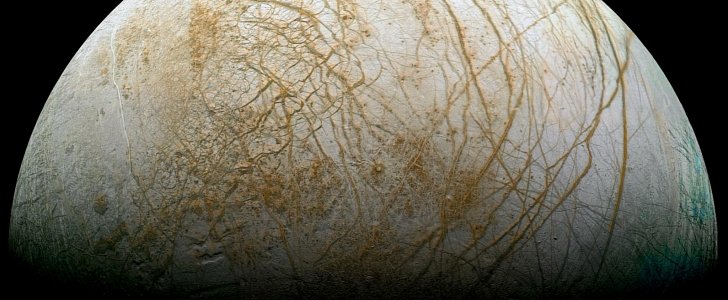Earlier this year, NASA announced that it had decided to work on a solar-powered spacecraft that would launch in 2020, and after reaching the Jupiter system, fall into a long orbit around the gas giant. What it didn’t mention was that a lander would also be attached to it and its mission is to get samples from the massive ocean on the planet and figure out whether or not there’s life there.
The program itself is already expensive and weighs heavily on the Agency’s shoulders, but according to an interview Texas Republican John Culberson gave Ars Technica, it appears there’s political and scientific will for the mission to happen. Culberson is the chairman of the House Appropriations Subcommittee with oversight of NASA’s budget, which means he has a big word to say when it comes to the amount of resources the government allots every year.
Culberson says that even though a lander was not the mission's primary target - which involves sending an observatory spacecraft called Clipper - it should nonetheless be among its aims. The principle is simple: if we are going there, why not double check if there’s anything alive underneath the thick layer of ice?
As far as we know from previous missions, Jupiter hits its moon Europa with so much radiation it would be lethal for a human in just a few days. That’s not the only issue with the moon, as the planet is put under powerful tidal forces. As a matter of fact, Jupiter’s influence is so big that the moon actually makes a sound resulting from the pushing and pulling of the ice upward and downward by tens of meters every few days. However, due to these movements, the frozen surface also allows for deep crevasses to unfold.
Thanks to previous space observations, scientists have found that some of these crevasses are actually active and emanate plumes. The team from NASA is still inspecting how it will eventually approach them to crop samples or even drop a short-lived impactor or missile-like penetrator to get inside the mysterious world.
According to the source, NASA is also not sure if the massive Space Launch System (SLS) rocket is what the team will use to send the Clipper to Europa. The SLS would deliver it to Jupiter in 4.6 years, which, compared to any other known space rocket currently in development, is probably the fastest.
The SLS rocket was designed to lift as much as 70 tons into low-Earth orbit. According to the source, engineers have calculated they can spare a total of about 510 kg for the sky crane and lander, and of the 230 kg lander, about 20 to 30 kg can be given over to scientific instruments.
The culminant purpose of the mission is for the probe to land near an active crevasse. If the Hubble telescope data is correct, this would offer a potential opening to the ocean far below. Samples of spouts is one thing they want to harvest, but scientists are also considering bots that would detach from the lander and examine the crevasses.
Culberson says that even though a lander was not the mission's primary target - which involves sending an observatory spacecraft called Clipper - it should nonetheless be among its aims. The principle is simple: if we are going there, why not double check if there’s anything alive underneath the thick layer of ice?
As far as we know from previous missions, Jupiter hits its moon Europa with so much radiation it would be lethal for a human in just a few days. That’s not the only issue with the moon, as the planet is put under powerful tidal forces. As a matter of fact, Jupiter’s influence is so big that the moon actually makes a sound resulting from the pushing and pulling of the ice upward and downward by tens of meters every few days. However, due to these movements, the frozen surface also allows for deep crevasses to unfold.
Thanks to previous space observations, scientists have found that some of these crevasses are actually active and emanate plumes. The team from NASA is still inspecting how it will eventually approach them to crop samples or even drop a short-lived impactor or missile-like penetrator to get inside the mysterious world.
According to the source, NASA is also not sure if the massive Space Launch System (SLS) rocket is what the team will use to send the Clipper to Europa. The SLS would deliver it to Jupiter in 4.6 years, which, compared to any other known space rocket currently in development, is probably the fastest.
The SLS rocket was designed to lift as much as 70 tons into low-Earth orbit. According to the source, engineers have calculated they can spare a total of about 510 kg for the sky crane and lander, and of the 230 kg lander, about 20 to 30 kg can be given over to scientific instruments.
The culminant purpose of the mission is for the probe to land near an active crevasse. If the Hubble telescope data is correct, this would offer a potential opening to the ocean far below. Samples of spouts is one thing they want to harvest, but scientists are also considering bots that would detach from the lander and examine the crevasses.
